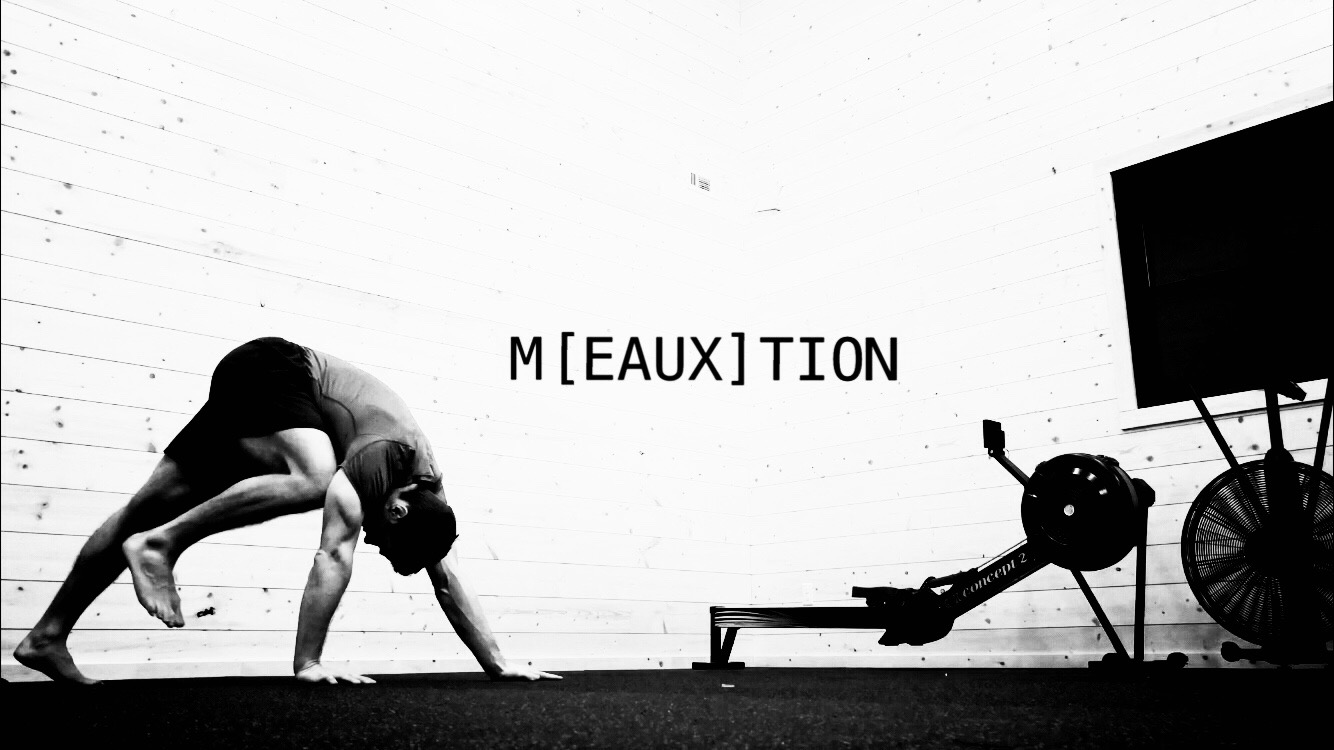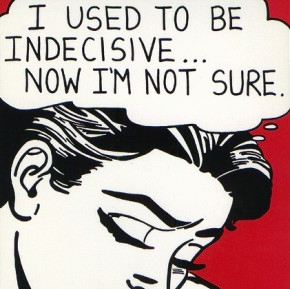Decisions, decisions, decisions
This might be the single most important thought I ever post on this blog. Seriously.
I really should make this my new landing page for anyone stopping by for the first time.
It’s that important in my opinion.
Decision fatigue refers to the idea that people make worse decisions after having made a lot of decisions.
Limiting decision fatigue can catapult your fitness success. It will streamline your workouts and relieve the anxiety of your workout choices. It starts from the moment that you decide to rid yourself of all of the minutiae.
If you’re not familiar with the concept of decision fatigue, try this exerciseDrive to your local gym, walk to the middle of the building and stop once you feel like you are dead center in the gym.
Now, do a slow 360 degree spin, making sure to take in all of the equipment, classes, posters, tv’s, etc. Take note of the vast amount of options that the gym has so graciously offered you in exchange for your monthly membership fee.
Now, take note of how overwhelming the number of options truly are.
Assume for a second that you walked into that gym with a limited knowledge on exercise, with no notes and no workout plan in hand. Assume that you walked in just to improvise your workout for the day.
My question is this… Assuming that you’re not yet an expert in effective exercise, how in the hell are you supposed to make steady progress toward your goals (which are commonly weight loss, fat loss or lean muscle gain)?
How?
How are you supposed to make any lasting progress what so ever? One great workout is not going to create change. A series a great workout spread out across months and years is going to solidify your results, paying dividends on your physical efforts.
There is a niche machine or gadget for everything in that gym, and in my personal opinion, over 80-85% of them are not worth your time. Yes, if you’re an able bodied person, put the blinders on to over 80-85% of the strength machines, ellipticals, treadmills and the like.
Just to take the heat off of the geriatric resistance machines and the hamster wheels, the equipment that I promote the most doesn’t help the situation much more.
Medicine balls, resistance bands, dumbbells, power wheels, kettlebells, barbells, sandbags, weight vests, suspension trainers, bodyweight specific movements, sleds, jump ropes, battling ropes, climbing ropes, plyo boxes, and on and on and on. This is all equipment that I highly endorse, but there is an overwhelming number of options. Where does it all fit?
I know how to design a program using this equipment, but it is insane to think that the average Joe or Jane, who is focusing their attention on building a career outside of fitness, should know how to incorporate all of this equipment.
You can experience this same sense of “decision fatigue” when you walk onto a dealership to shop for a car, peruse a website to compare digital cameras or enter a grocery store to purchase grocery items for the week.
Grocery store decision fatigue.
The grocery store might be the best immediate example of how draining decision fatigue can be. There are tens of thousands of products in a grocery store, and probably less than 200 that are ideal for human consumption, assuming you are mindful of your health. I recently read a marketing article stating that grocery stores put candy and other junk food next to the checkouts because by that point in the shopping experience, people are weakest. If they are going to make a impulse buy, it’s going to be in the check out line because they have the perception that once they are done checking out, the opportunity to have that package of delightful candy is no longer.
Decision fatigue. I don’t know why it took me so long to make the connection between decision fatigue and achieving body transformation/performance.
I have often stressed about paying attention to the details of your workouts, nutrition and recovery tactics, but now I have to admit that I believe that limiting the onset of decision fatigue might be the key to high level fitness results and reduced anxiety.
Off of the cuff, I have a couple of suggestions that can help relieve decision fatigue:
1) Have Your Workout for the Day in Your Hands!
Unless you’ve had experience designing strength and conditioning programs, don’t wait until you arrive to the gym and “wing it”. It’s a complete waste of time to sit down and brainstorm a workout once you arrive. Have your plan in hand so that when you arrive you can immediately get to work, then get out. Do not, for any reason, head to the gym expecting to make progress if you don’t know exactly what workout entails for that day. Would you drive to a far off, highly populated unknown destination without a map? Probably not. So don’t put yourself at risk by showing up to the gym without some idea of what is about to take place.
Also, have an idea of what you accomplished in the previous workouts and a decent idea of what you hope to accomplish in the future workouts. Keep measuring where you came from, where you are and where you are going.
Side-note: I am convinced that the likelihood of a person to buy poor quality food in the grocery store because they didn’t make a shopping list is increased exponentially. No list + no plan = poor choices. Decision fatigue beats you down until you have little to no willpower.
2) Choose between 1-3 pieces of equipment.
The best workouts I have ever had usually involve no more than 3 different pieces of fitness equipment. Weight can only come in so many forms, and to be honest, weight is weight. The earth’s gravitational pull has established what things are going to weigh, so keeping that in mind, weight is pretty much weight. The design of the grip points and the location of center of mass might vary between equipment. Think kettlebells versus dumbbells here.
I choose “iron” when it comes to weight. “Iron”, meaning dumbbells, barbells and kettlebells (cast iron). You cannot go wrong with this type of equipment. Using less equipment is great for acclimating yourself to that style of equipment. Jumping around from innovation to innovation without working to master the basic (time tested) equipment teaches you nothing over the long-haul.
As I mentioned above, you have to measure your progress. If you lift the same 100lbs on the barbell squat all year long, you’re not going to get anything out of it. Your body will adapt quickly and then progress will flatline. But, if you add weight in small increments, you’re going to get a hell of a lot stronger and your body will change in the process. Staying consistent with that barbell squat will allow you to measure your progress over time.
Choose less and you’ll receive more. Decision fatigue will entice you to touch everything in the gym for that “total body workout”. Total body workouts are accomplished through movement patterns, not equipment.
3) Choose less exercises.
Half reps, whole reps, tempo, single leg, double leg, off-center loading, overhead, goblet, racked, alternating grip, neutral grip, blah blah blah. There are so many options it makes me sick. “Options”, keeps fitness magazines profitable.
First off… squats, deadlifts, pull ups, chin ups, push ups, row variations, lunges, and a select few core specific exercises should make up the bulk of your training. Choose an upper body movement and pair it with a lower body movement. Sprinkle on a core drill after the second exercise in the tri-set, or address flexibility issues during your rest period. Add a realistic amount weight that challenges your muscles and joints, lift it up and down a few times, set it down, rest, rinse and repeat.
Leverage the basics to the fullest and you’ll end up getting great results on your investment.
An example of a complete resistance training workout might look like this:
Tri-Set #1
A1) Squat
A2) Chin Up
Core) Ab Wheel Roll Outs
Tri-Set #2
B1) Lunge
B2) Inverted Row
Core) Lateral Plank
9 out of 10 people will see dramatic results from a workout designed with the format above. Executed 2-3 times per week with adequate rest in between each session and a steady progressive loading plan, now you’re getting somewhere. Drink some water, eat protein and veggies, get adequate sleep and you’re going to enhance the gym work.
It’s almost disheartening reading statements like that isn’t it? I think our brains desperately want us to believe that there is something complex, some secret, some hidden element missing from our training efforts. We subconscious crave the complicated and complex versus accepting and leveraging the simple tactics.
I didn’t believe in simplicity much when I went deeper into strength and conditioning rabbit hole some years ago. I thought we needed more exercises, fatigue, fancy gadgets and variability all of the time.
It’s not true. Simple is better. Simple is better for the beginner population and simple can be a much needed element for the advanced population that has gotten sidetracked from information overload.
Our days are chock full of decisions. Use your mental strength to make decisions about life, career and what is best for yourself and your family, not your workouts. If you’re forced to workout in the evening, chances are quite high that you’ve been beaten down by the amount of decisions that you’ve had to make throughout that day. More decisions is not what the doctored ordered.
Find a simplified and streamlined plan and execute like a savage.
Cheers to limiting decision fatigue and leveraging simplicity in your workouts!
KG
*** The same can be done with nutrition. Find out how to limit decision fatigue with your eating here***




